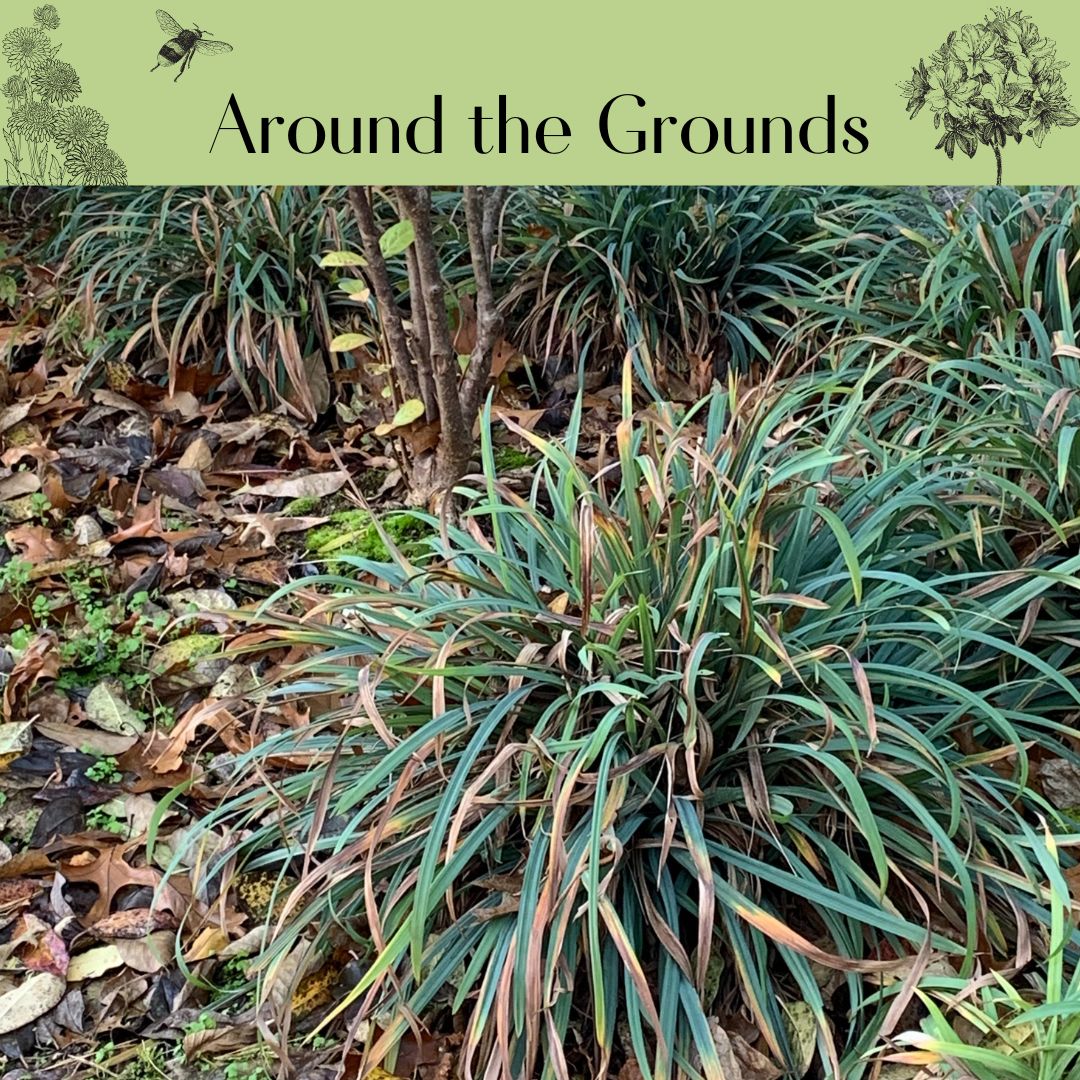In the depths of winter, when the garden is mostly brown, the only thing better than a beautiful evergreen plant is one that is ever-blue!
Carex laxiculmus or Creeping Sedge is a low, clump-forming grass that stays blue all winter long. It is an excellent garden plant: durable, care free, deer resistant, and versatile. In its native habitat (moist woodlands in the Eastern US), Creeping Sedge is a slowly spreading ground cover in shady areas. It forms compact clumps with strappy blue-green leaves, about half an inch wide and a foot long. Once established, it sends out underground rhizomes that will pop up nearby to form new clumps. It is not very aggressive, and is easily controlled, but in a few years, it can form a lovely colony under trees and shrubs, or in a shady flower garden.
Carex laxiculmus is easy to find in nurseries under the name ‘Hobb’ or “Bunny Blue” sedge, a trademarked name. Growers Lisa and Bobby Head of South Carolina trademarked the cultivar and named it “Bunny Blue.” The trademarked plant differs little from the native species, and in 2019, Neil Barger of New Moon Nursery reported that in side-by-side trials at New Moon, there was little discernable difference; but if anything, the species seemed to perform slightly better than the trademarked cultivar. Others believe that “Bunny Blue” is somewhat bluer in color than the species and more tolerant of dry soil. Though at the Nature Center we prefer planting straight species whenever possible, “Bunny Blue” is much easier to find, and we love it!
Although it is native to moist woodlands with rich soil, we have seen “Bunny Blue” sedge perform well even in thin, fairly dry soil. It is a good choice for underplanting trees. A small plant can be tucked in among sensitive tree roots, and it will send rhizomes out to find open spaces without disturbing or competing heavily with the tree’s root structure. “Bunny Blue” sedge is hardy in Zones 4 to 7, but can take the heat even in Zone 9 with enough shade and supplemental water.
“Bunny Blue” sedge makes a great “living mulch” when combined with other native shade-loving plants. Plant it with native ferns, Wild Ginger (Asarum canadensis), Foamflower (Tiarella cordifolia), and violets to protect tree roots and preserve soil moisture while providing habitat and food for wildlife. Use it instead of hosta and liriope in shade gardens, and instead of pachysandra, ivy, vinca, or winter-creeper under trees and shrubs.
Carex laxiculmus flowers in early summer, but the flowers are barely noticeable on fine stems rising just above the grassy clump. The lush foliage works well in rain gardens, and the spreading rhizomes are effective at controlling erosion on slopes or rain-washed areas. The lovely blue color works even in shady patio containers for color contrast with summer annuals. Plant it in the garden when summer ends!
In late winter or early spring, you can cut back the foliage of “Bunny Blue” sedge to the base of the clump, or just snip off any tattered leaves. New growth will soon appear, adding a bit of blue to your otherwise green spring!

